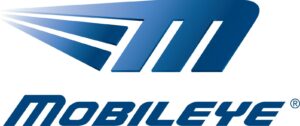![]() Nextracker (NASDAQ: NXT), a provider of solar tracking solutions for solar power projects, was founded in 2013 by a team led by Daniel Shugar. Today, Nextracker is headquartered in Fremont, California, where it still led by Shugar, who acts as the company’s Chairman and CEO, as well as one of Shugar’s founding partners, Alex Au, the company’s current CTO. Operating with a March 31st fiscal year end, Nextracker recorded fiscal 2022 revenue of $1.5 billion, a 21 percent increase over the prior year.
Nextracker (NASDAQ: NXT), a provider of solar tracking solutions for solar power projects, was founded in 2013 by a team led by Daniel Shugar. Today, Nextracker is headquartered in Fremont, California, where it still led by Shugar, who acts as the company’s Chairman and CEO, as well as one of Shugar’s founding partners, Alex Au, the company’s current CTO. Operating with a March 31st fiscal year end, Nextracker recorded fiscal 2022 revenue of $1.5 billion, a 21 percent increase over the prior year.
Nextracker debuted on the NASDAQ on February 9th, 2023, in 30.6 million Class A common stock at an IPO share price of $24, the company netted roughly $700 million from the offering, and holds a market cap of roughly $1.4 billion. When added to the company’s pre-IPO cash balance of $84 million, Nextracker held $818 million in cash with no debt immediately after the offering. With a recent share price of $31, the company carries a market cap of roughly $1.4 billion.
Nextracker’s mission is to be the leading energy solutions firm in the world that enables the smartest, most reliable, and most productive solar power solutions for future generations. The company has grown into a top provider of intelligent and integrated hardware and software solar tracker offerings that are used in both utility-scale and ground-mounted solar projects worldwide. Nextracker’s solutions allow solar panels to follow the sun’s path across the sky, and optimize power output and performance based on this data. With these solutions, Nextracker has led the solar industry in gigawatts shipped both globally and domestically every year since 2016.
The largest gating factors that prohibit the immense growth in the popularity of solar power solutions are cost and energy output. Nextracker’s systems address both of these concerns, as its solar tracking offerings enable solar panels to generate the most power output possible in the most cost-efficient manner. Nextracker claims that solar trackers produce up to 25 percent more energy than solar power projects that do not track the sun.
Historically, the solar industry has operated using its established standard sun-tracking architecture that enables rows of solar panels to move in tandem as a single unit to follow the path of the sun. Nextracker has created the next-generation solar tracker that empowers solar panels to move independently – rather than as a single unit – to allow for more precise positioning and provide more value to customers. We note that Nextracker currently boasts roughly 170 patents worldwide, with approximately 70 issued in the United States.
Nextracker’s customers generally encompass engineering, procurement, and construction companies (EPCs), in addition to solar project developers and owners. Nextracker’s more than 200 customers hail from over 30 countries spanning six continents around the world. Moreover, in fiscal 2022, 62 percent of Nextracker’s revenue came from the United States, with the remaining 38 percent of sales generated abroad. We note that in fiscal 2021 and fiscal 2022, Nextracker had one customer, SOLV Energy, contribute at least ten percent of total revenue. For the six month period ended September 30, 2022, the company recorded a gross margin of 13 percent, along with an operating margin of eight percent.
Tags: Independent IPO research, IPO research on Manufacturing Stocks, Independent Research on Nextracker.



 Mobileye Global (NASDAQ: MBLY), a provider of advanced driver assistance systems (ADAS) and
Mobileye Global (NASDAQ: MBLY), a provider of advanced driver assistance systems (ADAS) and  .
.